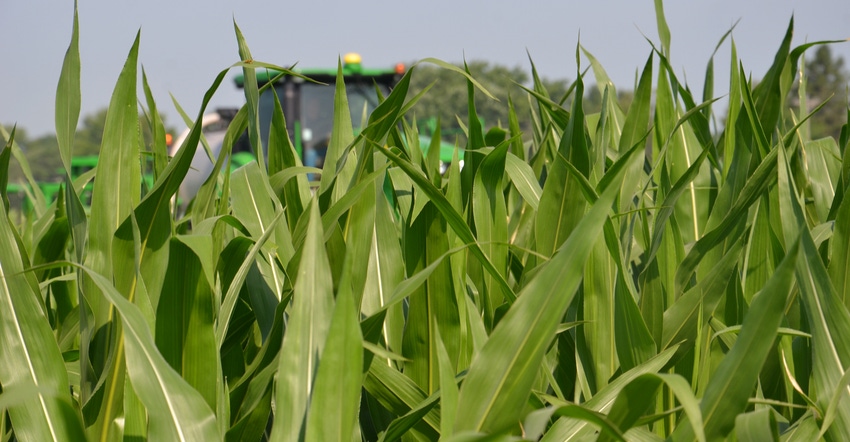April 28, 2020

A good growing season in 2020 would be uplifting for everyone amid the worries about COVID-19. The pandemic has caused a great deal of misery and wreaked havoc on our economy. Americans will rise again, and thriving crops can give us courage and strength.
Corn is one of the most efficient crop plants in the world for converting nutrients, water and sunlight into starches, proteins and oils. From germination and emergence to full maturity, each corn plant adjusts to maximize number, size and weight of kernels, limited only by its genetics and environment.
Realize each plant wants to produce as many healthy progeny as possible. It’s your responsibility to provide the environment to produce the maximum yield possible.
Growing degree days
So, what are the critical stages of growth where a corn plant needs your help? Corn plants need tender loving care throughout the growing season. Growth of corn plants is relatively consistent and driven by heat units, measured as growing degree days.
To determine GDDs, calculate average daily temperatures by adding the highest and lowest temperatures of each day and dividing by 2. Then subtract 50 from that average daily temperature to get GDDs for each day. If the low falls below 50 degrees F, use 50 as the low, and if the high goes above 86 degrees F, use 86 as the high in calculating averages. This allows room for adjustments in the formula.
If you add GDDs of each day from planting to physiologic maturity, or black layer, you will have the GDDs needed by the hybrid. Most 105- to 115-day relative maturity hybrids need somewhere between 2,400 and 2,800 GDDs from emergence to black layer.
According to Bob Nielsen, Purdue University Extension corn specialist, after seedling emergence, with ample moisture, nutrients and normal sunlight availability, corn growth is relatively consistent. From emergence to the V10 leaf stage, or about waist-high, it takes an average of 82 GDDs to add one new leaf. After V10, corn plants pick up speed and add a new leaf every 50 GDDs. You can almost see corn plants grow right in front of your eyes.
Nielsen and Peter Thomison, a retired Ohio State University Extension corn specialist, confirmed years ago through research that when corn is planted late, say in early June, it typically takes about 200 fewer GDDs for the same hybrid to reach maturity. However, Nielsen acknowledges that this pattern didn’t hold true in 2019, a most unusual year. Corn still required the normal number of GDDS to reach maturity, regardless of planting date.
While it’s possible corn hybrids have changed, he suspects 2019 was an anomaly, and still believes late-planted corn matures with fewer GDDs in most years.
Key growth stages
Corn needs special attention during critical stages. At V6 to V8, be sure to sidedress with nitrogen before plants are too tall. Check for deficiency of nutrients such as sulfur, zinc, magnesium and other micronutrients through tissue testing, and apply them if needed.
Pollination is the next most critical stage in the life of a corn plant. Make sure insects like Japanese beetles and western corn rootworm beetles aren’t clipping silks. Use insecticides, if needed, to control these pests and protect your crop.
Grain fill is also critical. Look for discussions on the next key stages of corn growth soon.
Nanda is director of genetics for Seed Genetics Direct, Jeffersonville, Ohio. Email [email protected] or call 317-910-9876.
About the Author(s)
You May Also Like






